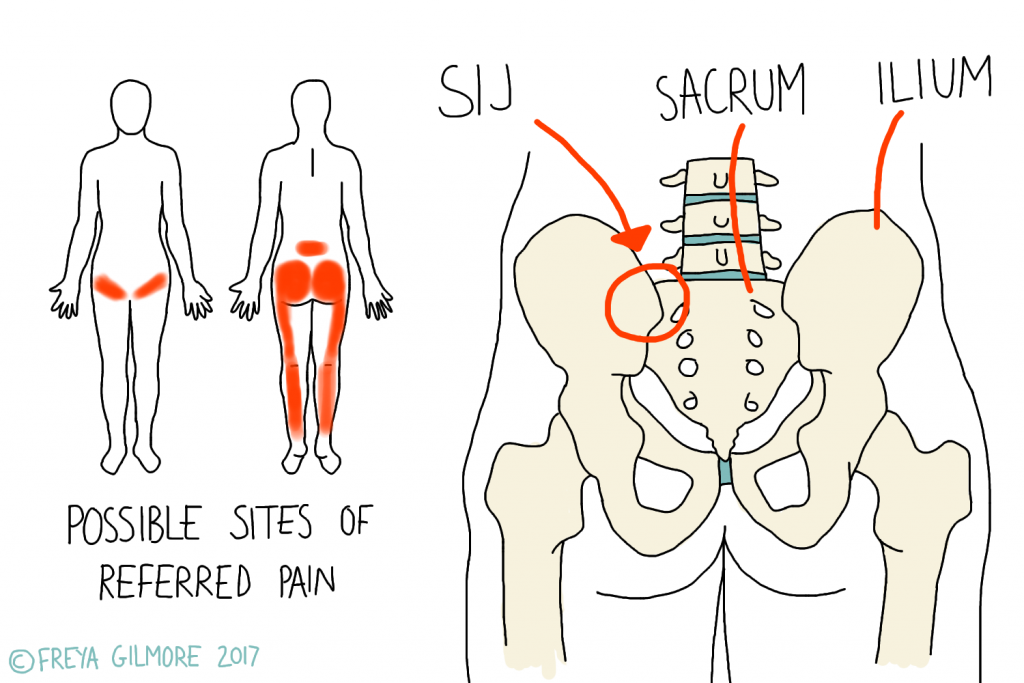The SIJ is the joint between the pelvis and the spine. Some people have dimples over the joints, but most people have a bit of a lumpy area over them, which can be alarming if you first find the lumps because you have pain! This is normal, although pain at that spot does not necessarily indicate an SIJ problem.

The SIJ in Pregnancy
During early pregnancy, the body begins preparing for birth. This involves the production and release of a hormone with the role of increasing movement in the pelvis. It relaxes the strong ligaments around the SIJs, which is ideal for helping a baby make its way down the birth canal, but can cause lower back pain in the months preceding it.
As the demands on the body increase throughout pregnancy, this SIJ ache can develop into SPD, causing intense pain at the front of the pelvis. The best thing you can do to prevent or manage SPD is to strengthen the muscles around the affected joints- your osteopath can support you with this if you are affected.
Referred Pain from the SIJ
The diagram above shows areas where pain can be felt when the SIJ is irritated. You might notice that some of these areas are also painful during an episode of sciatica. SIJ irritation can indeed be mistaken for sciatica, although the pain tends to be more of a dull ache than the characteristic sharp or shooting pain of sciatica.
Ankylosing Spondylitis (AS)
AS is an autoimmune condition that typically takes around 8 years to diagnose from the first symptoms. This long delay may be down to its dismissal as “just a bad back”, because on the surface it can look like garden-variety lower back pain. However, the pain in AS is caused by flare ups of inflammation that affect the SIJs and lower spinal joints. Once these flares subside, the body attempts to heal the damage done, inadvertently laying new bone over the joints themselves. This causes progressive stiffness throughout the lower back. In addition, the new bone is more brittle than normal bone, so it can be associated with additional pain due to fractures further down the line.
Your osteopath can screen for AS, but only a rheumatologist can formally diagnose it.
Managing SIJ Pain
During your appointment, your osteopath will take a detailed case history to get an idea of what might be causing your pain. They will then examine you to see what other patterns could be playing a role. Treatment is therefore tailored specifically to your case, but typically involves work for both the muscles and joints. Joint work may entail gentle mobilisations or more powerful manipulations (or “clicks”), and muscles can be treated with massage or more active techniques.
Exercises can be very useful, especially if there are other areas involved. Stretches, strengthening, and mobilising exercises can work well together to keep on top of your progress between appointments. If your symptoms are recurrent, these exercises may also help you to reduce the frequency or intensity of your flare ups.
Contact us on 077 7593 1609 to make an appointment for your back pain in Alsager.


